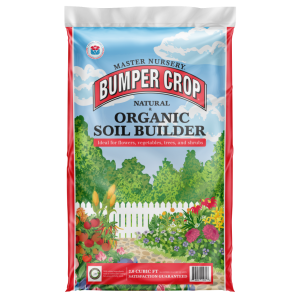It’s never too early to plan for fall decorating, and ornamental gourds are a must-have to spread the seasonal vibes. These plants are relatively easy to grow and require minimal maintenance to produce an abundant and vibrant harvest. Whether you’re looking to add something a little different to your home veggie garden or want a convenient and abundant source of autumnal décor items in seasonal colors, ornamental gourds are the way to go!
Types
When choosing suitable varieties of gourds for planting, many options are available. Ornamental gourds can be either large or small and come in various shapes. They are colorful in shades of green, orange, white, yellow, and red. They can be smooth surfaced or lumpy, bumpy, and winged. Smaller selections are generally used for decorating indoors on tabletops and mantles or added to outdoor planters, window boxes, and containers amongst seasonal plants. Larger varieties may be placed outdoors on steps, stoops, porches, and decks. Some, like “dipper, “bottle, and “birdhouse” gourds, are perfect for drying and crafting, turning them into usable and sturdy water dippers, bottles, and birdhouses. Check your local Master Nursery® Garden Center for seed availability.
Planting
Gourd seeds germinate easily and quickly and are best directly seeded into the garden after all danger of frost has passed. They may be planted right into the ground, in a container, or in a raised bed. Amending your in-ground garden soil with Master Nursery® Bumper Crop® Soil Builder [Eastern & Midwestern Regions | Western Region] before sowing seed is the best way to ensure that your gourds are off to a healthy start. In the Eastern & Midwestern Regions, you may fill your raised bed with Master Nursery® Bumper Crop® Soil Builder. If you plan to grow your gourd vines in containers, Master Nursery® Bumper Crop® Potting Soil [Eastern & Midwestern Regions | Western Region] is your best choice as it is lightweight. If you are unsure how much soil your garden, raised bed, or container requires, our handy soil calculators will help you determine the amount you need.
Planting the seed in small hills or mounds of soil is the traditional way of growing gourds as it contributes to good air circulation, thus reducing disease. Gourds love compost, so build your mounds using plenty of Master Nursery® Bumper Crop® Soil Builder [Eastern & Midwestern Regions | Western Region]. You can’t have too much! Sow three seeds to a mound, one to two inches deep, spacing them evenly so the vines will grow and flow down the mound. If growing many vines, mounds should be placed at least five feet apart. There is no need to mound soil when growing in a container, as the container serves as a mound. Because gourds are vines, growing them on an arch or trellis is a great way to utilize garden space.
Care
Once planted, gourd vines need plenty of sunlight and water. Placing them in an area that receives full sun will help ensure maximum growth and yield. Water regularly to keep the soil moist but not soggy. As the vines start producing flowers, it’s important to fertilize them regularly to keep them healthy and productive with more flowers and fruit. Side dress mounds with Master Nursery® Bumper Crop® All Purpose Food once a month throughout the growing season.
Pruning
It’s a good idea to prune the tip of your gourd vines when they reach 10 feet long. This will encourage side branching of the vine, helping it to produce more fruit.
Harvesting
When it comes time for harvest, ornamental gourds should be picked when the vine’s tendrils begin to turn brown. Gourds need 100 to 180 days to ripen. Consult your seed packet for the estimated “Days to Maturity.” When mature, cut your gourds from the vine with pruners or a knife, don’t pull them. To ensure they last as long as possible, gently wash off all dirt from the gourds using a soft cloth. Dry them thoroughly. Store them in a cool, dry place away from direct sunlight or humidity until ready to display. With proper care, these colorful fruits can make for a stunning display during the fall months!
Happy harvesting!
Need more gardening inspiration? Click here.








